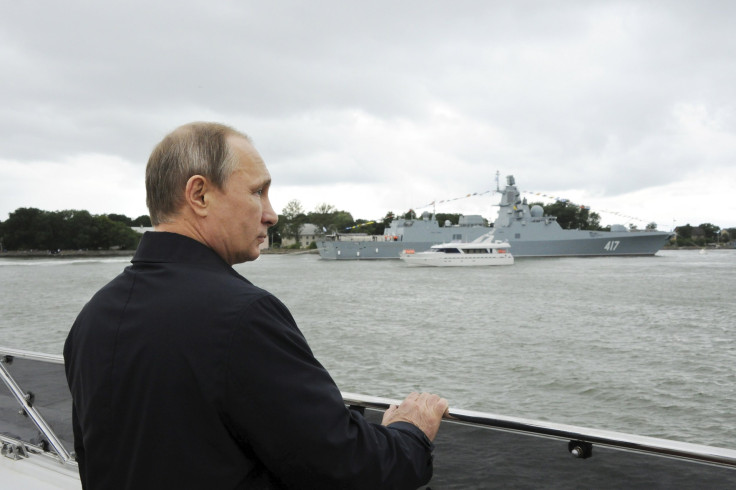Russia, China, Iran Joint Military Exercises Seeking To 'Deepen' Cooperation Kicks Off

KEY POINTS
- China, Russia and Iran began their joint naval exercises Wednesday
- China's defense ministry said the military activity aims to deepen cooperation between the three countries' navies
- The White House downplayed the military exercises of the U.S. rivals
Three countries at odds with the U.S. have teamed up for joint naval exercises this week.
According to China's Defense Ministry, the "Security Bond-2023" trilateral naval exercises would be led by naval forces of China, Iran and Russia in the strategic Gulf of Oman starting Wednesday. Iran, Pakistan, Oman and the United Arab Emirates all have coastline along the waterbody.
"This exercise will help deepen practical cooperation between the participating countries' navies ... and inject positive energy into regional peace and stability," the Chinese defense ministry said in a statement, the Associated Press reported.
The Russian Defense Ministry released a separate statement regarding the military exercises, saying that the activity would focus on setting up a multinational task force, live-fire drills and search-and-rescue operations.
The Russian naval contingent consists of the frigate Admiral of the Fleet of the Soviet Union Gorshkov and sea tanker Kama, Russian state-owned news agency Tass reported.
China, which has a foreign military base in Djibouti, located just across the Gulf of Oman, mobilized its guided missile destroyer Nanning for the joint drills.
Iran sent its frigates Sahand and Jamaran, the corvette Bayandor, and other naval vessels for the trilateral exercises, which will continue until Sunday.
U.S. National Security Council spokesperson John Kirby downplayed the three countries' naval drills, noting that the U.S. and its allies conduct joint military exercises all the time. He added that this was not the first time that Russia and China banded together for military training.
However, the White House official said the U.S. will continue to monitor the trilateral naval exercises to ensure that the activity does not threaten the country's national security.
In 2022, Iran, China and Russia also conducted joint naval drills over an area of 17,000 square kilometers (6,560 square miles) in the northern Indian Ocean, Reuters reported. Last year's drills featured exercises including rescuing a burning vessel, releasing a hijacked vessel and shooting at air targets at night.
The U.S. continues to have rocky relationships with the three countries.
The U.S. is siding with Ukraine in its war against Russia, providing military and humanitarian assistance to the beleaguered country throughout the now-1-year-old conflict.
However, tensions between the U.S. and Russia were fueled after the U.S. military accused two Russian fighter jets of colliding with an American spy drone over the Black Sea Tuesday.
China is seen by the U.S. intelligence community as the most consequential threat to the country's national security, as the Asian country is ramping up its economic, military and technological sectors to challenge the U.S. global standing.
China-U.S. relations have also been marked by cross-strait tensions with Taiwan, the continued Chinese aggression in the South China Sea, and the recent suspected spy balloon incident.
Meanwhile, the U.S. views Iran as a threat due to its nuclear ambitions.
After former President Donald Trump pulled out the U.S. from the 2015 nuclear deal with Iran, the Islamic country pursued developing its nuclear weapon production to dangerous levels.
Pentagon raised the alarm when it revealed in a congressional hearing that Iran can now produce one nuclear bomb's worth of fissile material in "about 12 days."
A confidential report from the U.N. nuclear watchdog International Atomic Energy Agency noted that Iran is inching closer to producing weapons-grade uranium with 90% purity.

© Copyright IBTimes 2024. All rights reserved.





















